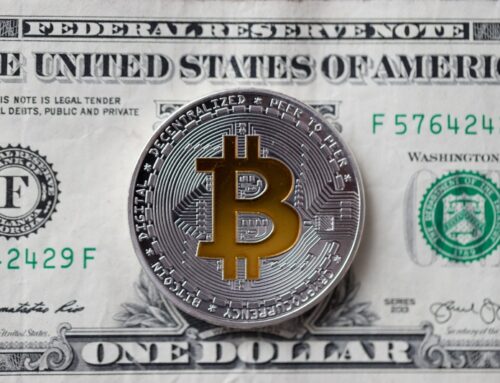…because, it seems, that your assets may have been pledged multiple times as collateral in a leverage process known as “Re-hypothecation.” Absent proof otherwise, this should probably be assumed to include any money you might have in an IRA, any alleged retirement you think your employer owes you, (what do you think the company does with pension assets, anyway, lock them up in a box?), 401(k), or anywhere else for that matter.
And so, if you panic and try to claim your assets, someone else who panicked before you might already have possession of them. You, or more likely, your retirement plan administrator, could find yourself in court, no doubt for several years, fighting over something you believe you own, right along with several others who believe they own it, too. You might even find out that the thing you bought in the markets has claims that precede yours, and in truth you own nothing more than a piece of paper (or worse, an electronic “statement” on someone’s web site somewhere) that is a promise of ownership, not actual ownership itself. You may find yourself to be nothing more than an unsecured creditor in a BK proceeding. Ask anyone how that works out. Ask the people who had accounts at MFGlobal.
Early readers of my posts on RTP will recall my ranting often about the treatment of the automaker Senior Secured Bondholders, how hundreds of years of bankruptcy case law was thrown aside, how the “capital structure,” a carefully designed and universally understood order for paying off creditors in a bankruptcy, was shredded by the Obummer administration and some weasel named Steve. You see, if property rights, ownership, and the rule of law don’t matter, then they doesn’t matter- PERIOD.
Public employees / Police / Firefighters: this affects you as well. Depending on your individual city / county / state, your retirements are funded by the public and / or by yourselves, and the proceeds are “invested” in paper “assets.” These paper “assets” are nothing more than promises of ownership, ownership of either a cash flow stream (interest on “bonds”) or shares of the productive output of a company (“Stock”). The thing that is being called into question is simple: who actually owns them? If they’ve been pledged multiple times, and your plan administrator wants to sell some of them in order to pay your retirement income, what happens to your retirement when their ownership is called into question and he or she is prevented from selling them? It sort of goes without saying, but retirement income projections are based on the assets actually being there. You’re gonna get screwed right along with the rest of us out here in the unwashed masses.
The lawsuits around the MFGlobal debacle have begun. The subject? Ownership of assets. Early on in the MFG bankruptcy, observers began commenting at how the bankruptcy trustee was handling the case in almost precisely the most destructive way possible: by locking everything up and holding everyone hostage, rather than quickly transferring client accounts (actual contract holdings and deposited collateral in so-called “segregated funds”) to a different, solvent brokerage where trading could continue; this is what had normally happened with other, similar bankruptcies. We reported earlier that the margin (collateral) calls continued even while the clients had no access to or ability to trade the underlying contracts on which the calls were being made (“you can’t buy or sell in your account, and the cash you deposited in your account as collateral is “missing,” but if you want to keep your account send us more money”). I am now becoming convinced that the reason the box was locked tightly closed is that it was empty, or even worse, it contained a confused and largely unenforceable maze of assets that had been pledged, re-pledged, promised multiple times over, and thus no one could really figure out who owned them. Revelation of that could start a cascading default, as the principle in the title played out in real time.
…MF Global exposes the 2011 equivalent of the 2008 AIG: virtually unlimited leverage via the shadow banking system, in which there are practically no hard assets backing the infinite layers of debt created above, and which when finally unwound, will create a cataclysmic collapse of all financial institutions, where every bank is daisy-chained to each other courtesy of multiple layers of “hypothecation, and re-hypothecation.”
As readers will recall, the actual office that blew up the world the first time around, was not even based in the US. It was a small office located on the top floor of 1 Curzon Street in London’s Mayfair district, run by one Joe Cassano: the head of AIG Financial Products. The reason why this office of US-based AIG was in London, is so that Cassano could sell CDS as far away from the eye of Federal regulators as possible. Which he did. In fact he sold an unprecedented $2.7 trillion worth of CDS just before the firm collapsed due to one small glitch in the system – the assumption that home prices could [not] go down as well as up. Yet the real question is why he sold so much CDS? The answer is simple – in a world of limited real assets, the only way to generate a practically limitless cash flow annuity would be to sell synthetic insurance on a virtually infinite amount of synthetic underlying. Which he did. Only when it came time to pay the claims, AIG blew up, forcing the government to bail it out, and set off the chain of events where we find ourselves now, where every day could be the developed world’s last if not for the ongoing backstops, guarantees and bailouts of the central banking regime.
MF Global and the great Wall St re-hypothecation scandal
MF Global’s bankruptcy revelations concerning missing client money suggest that funds were not inadvertently misplaced or gobbled up in MF’s dying hours, but were instead appropriated as part of a mass Wall St manipulation of brokerage rules that allowed for the wholesale acquisition and sale of client funds through re-hypothecation.
…
By way of background, hypothecation is when a borrower pledges collateral to secure a debt. The borrower retains ownership of the collateral but is ‘hypothetically’ controlled by the creditor, who has a right to seize possession if the borrower defaults.
…
A simple example of a hypothecation is a mortgage, in which a borrower legally owns the home, but the bank holds a right to take possession of the property if the borrower should default.
In investment banking…
Re-hypothecation occurs when a bank or broker re-uses collateral posted by clients…to back the broker’s own trades and borrowings. [emphasis added] The practice of re-hypothecation runs into the trillions of dollars and is perfectly legal.
…
Prior to Lehman Brothers collapse, the International Monetary Fund (IMF) calculated that U.S. banks were receiving $4 trillion worth of funding by re-hypothecation… With assets being re-hypothecated many times over (known as ‘churn’), the original collateral being used may have been as little as $1 trillion…
…we read with great distress a just broken story by Bloomberg according to which HSBC, that other great gold “depository” after JP Morgan (and the custodian of none other than GLD) is suing MG Global “to establish whether he or another person is the rightful owner of gold worth about $850,000 and silver bars underlying contracts between the brokerage and a client.” The notional amount is irrelevant: it could have been $0.01 or $1 trillion: what is very much relevant however, is whether or not MF Global was rehypothecating (there is that word again), or lending, or repoing, or whatever you want to call it, that one physical asset that it should not have been transferring ownership rights to under any circumstances. Essentially, this is at the heart of the whole commingling situation: was MF Global using rehypothecated client gold to satisfy liabilities? The thought alone should send shivers up the spine of all those gold “bugs” who have been warning about precisely this for years. Because the implications could be staggering.
From the referenced Bloomberg article:
Five gold bars and 15 silver bars underlie eight Comex contracts between the brokerage and its client Jason Fane of Ithaca, New York, the unit of London-based HSBC said in a court filing yesterday. Both parties have asserted claims to the bars, creating difficulties for HSBC, which is storing them, the bank said. HSBC asked a judge to decide who the rightful owner is.
“HSBC has received conflicting instructions regarding ownership and disposition of the property,” it said. “Accordingly, HSBC is exposed to multiple liabilities with respect to the disposition of the properties.” The unit is HSBC Bank USA National Association.
If you haven’t panicked by now, and you really want to panic, read the 2010 paper written for the IMF on the subject of rehypothecation (pdf warning). Here’s a teaser:
There has been very little research in this area. One of the first papers on this topic showed how the collapse in rehypothecation levels was contributing to global deleveraging after Lehman’s demise (Singh and Aitken, 2009a). Adrian and Shin (2009) provide an analytical model where collateral assets can be recycled by pledging and re-pledging; the model shows that during a crisis, the cumulative haircuts (or ‘margin spiral’) on pledged collateral can be sizable. Gorton (2009) shows that during a crisis, haircuts on collateral can result in a run on the shadow banking system. Singh and Aitken (2009b) show that counterparty risk during and in the aftermath of the recent crisis resulted in a decrease of up to $5 trillion in highgrade collateral due to reduced rehypothecation, decreased securities lending activities and the hoarding of unencumbered collateral. [emphasis added; imagine anyone wanting to “hoard unencumbered collateral,” just to keep it from being stolen by the banksters. Hey! That sounds unpatriotic, or something!] (The (sizeable) Role of Rehypothecation in the Sadow Banking System, Section I: Introduction, pg 3).
No wonder that an idea, once thought “fringe,” is becoming more and more mainstream: “If you can stand in front of it with an assault rifle and physically protect it, then it’s real.” BTW, this year’s “Black Friday” gun sales smashed the previous record, increasing by a third over 2008’s record of more than 98,000.
We COULD just shine some bright light on the world of “Wall Street high finance,” start telling the truth, and let some actual trust trickle back into the financial system. Why is that so hard?






